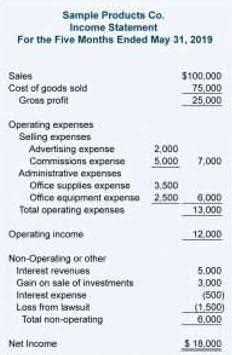
These factors help to ensure that the overall performance is improved across the organization because they reason that it contributes positively to stretching their limits. This idea of accountability tends to be impactful because it helps create a sense of responsibility within the company, which tends to have promising outcomes for the company. Performance-Based Budgets are focused on outcomes and targets set for the organizations. After rolling out the processes, it is vital to measure the performance given by the persons involved in the process to initiate the actions accordingly.
Help improve MDN
This method aims to ensure that resources are used effectively to achieve organizational objectives, thereby maximizing value for stakeholders. Before diving into the specifics, it’s important to understand the concept of performance budgeting. This is a budgetary process where funding levels are directly related to anticipated results or impacts. It connects financial investments to achieving specific outcomes, ensuring efficient use of resources.

Template 7: Budget Status Report
They help to align the budget with the strategic goals and objectives of the organization, project, or program. By forecasting the future scenarios and adjusting the budget accordingly, the budget managers can ensure that the budget reflects the priorities and needs of the stakeholders and the beneficiaries. Technology can help you simplify and improve your expense management by reducing manual work, errors, and fraud. For example, you can use software or apps to capture receipts, scan invoices, generate reports, and integrate with your accounting system. You can also use cloud-based solutions to access your data from anywhere, anytime, and on any device. There are report samples in PDF format on budget report templates as well as the Financial Report Templates available on our website.
Steps involved in implementing Performance-Based budgeting
This slide represents timeline of the performance-based budgeting process in an organization. It further includes process steps such as allocate tasks on the basis of team ability, identify strategies to achieve objectives, evaluate best strategies, etc. Introducing our Performance-Based Budgeting Process Gantt Chart Timeline set of slides. The topics discussed in these slides are Process, Measure Performance, Strategies Among. This is an immediately available PowerPoint presentation that can be conveniently customized. Performance-based budgeting offers several potential benefits for private sector organizations, including improved decision-making, increased accountability and transparency, and better resource allocation.
- The factors to examine and consider, all are mentioned for your convenience.
- Therefore, the main criterion used to gauge these budgets’ efficacy is based on the eventual outcome and contribution to the organization.
- Overcoming these challenges requires a robust data management system that provides accurate and timely insights into financial and performance data.
- It includes options for storing challenges, descriptions, solutions, and additional comments.

This means that the action plans should be subject to periodic review and revision based on the changing circumstances, needs, and priorities of the organization and its stakeholders. This can help to ensure the relevance, responsiveness, and adaptability of the action plans. It can also help to identify and address the challenges, Online Bookkeeping risks, or opportunities that may arise during the implementation of the action plans. A budget is a plan that outlines your expected income and expenses for a given period.
- All of these come in handy for an overarching expenditure budget performance report to be all-inclusive.
- It can be referred to as preparing a budget to evaluate productivity across different operations.
- Praxie’s AI-Powered Digital Transformation software platform digitizes your business 10x faster at one-tenth the cost of other enterprise software solutions.
- Graduated in Electrical Engineering at the University of São Paulo, he is currently pursuing an MSc in Computer Engineering at the University of Campinas, specializing in machine learning topics.
- Budget variance is the difference between the actual amount spent or earned and the budgeted amount for a given period.
- Time-bound action plans have a clear timeline and deadline for completion.
Below we are presenting 18+ Budget Report Examples & Templates for your benefit in this regard. Another industry that can benefit from this how is sales tax calculated type of budgeting system is the healthcare industry. Performance-based budgeting encourages hospitals and clinics to focus on patient outcomes rather than costs.

Characteristics of Performance Budgets
- The template also includes slides on identifying and addressing common organizational challenges and different methods for optimal resource allocation.
- It involves comparing the actual results with the planned budget, identifying the variances, and explaining the causes and consequences of those variances.
- Presenting our Activity Based Budgeting Performs Ppt Powerpoint Presentation Styles Background Images Cpb PowerPoint template design.
- Performance-based budgeting can help by directing funds to the department operations that produce the most profitable results.
- The budget managers should review and update the forecasts and budget adjustments regularly and make the necessary revisions and corrections as soon as possible.
In addition, it is crucial to see whose performance was up to performance budget example the mark and what changes are required to be made. It is aimed to improve the efficiency of the people involved in performing the budgeted task as per the budget. The advantages in the public sector are an increase in accountability of the local authorities to the taxpayers, communication to the public about priorities, and quantifying particular goals. Taxpayers want to know where and how their money is being spent and to what end.